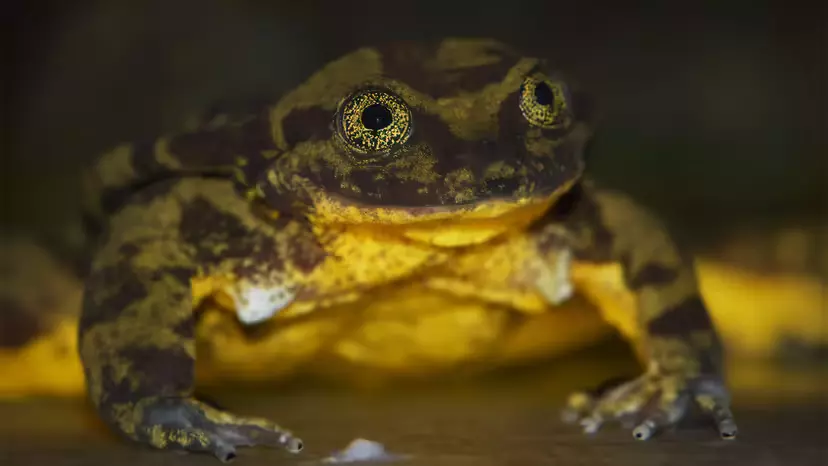Headline facts
The protagonist is the Sehuencas water frog (Telmatobius yuracare), a Bolivian stream frog once feared down to a single captive male nicknamed Romeo.
In January 2019, researchers found five wild frogs (2 females, 3 males) in a cloud-forest stream — including “Juliet.”
The crisis mirrors the global amphibian decline: chytridiomycosis (chytrid fungus disease) + habitat degradation + tiny remnant populations.
The romance is just the hook; the real work is biosecure treatment, captive breeding, habitat repair, and—eventually—reintroduction.

A decade alone: Romeo lived in a Bolivian aquarium for years as searches kept turning up empty. His advertised “last-of-my-species” profile drew attention, but not a mate.
The turning point (Jan 2019): Survey teams re-checked a previously searched stream in the Bolivian cloud forest and found five Sehuencas water frogs.
Why bring them in? The site was degraded and the population so small that rescuers opted for full collection, chytrid screening and treatment, and a biosecure captive-breeding program to build an assurance colony while field work continues.
Group: Amphibia → Anura (frogs) → Telmatobius (Andean stream frogs)
Range: Central Bolivia, cool, oxygen-rich cloud-forest streams and headwaters
Look & lifestyle: Baggy, wrinkle-skinned, olive to brownish; adapted to fast, clear water with riffle-pool mosaics; feeds on aquatic invertebrates
Conservation status: Regionally critically imperiled due to disease and habitat threats
Chytridiomycosis (chytrid)
Caused by the skin-infecting fungus (often BD), which disrupts gas exchange and electrolytes through the skin, leading to cardiac/respiratory failure.
Cool, moist mountain streams are ideal for both the frog and the pathogen.
Habitat degradation
Roads, mining, logging, and agriculture increase sediment, nutrients, and pollutants; forest loss shifts microclimate and alters flows.
Small-population effects
Low densities mean mates are hard to find; genetic diversity shrinks; disease and inbreeding risks rise.
Biosecurity & treatment: Standard skin swabs/qPCR for chytrid; temperature-controlled antifungal baths; strict disinfection to prevent cross-contamination.
Husbandry & breeding:
Environmental cues: Simulate rainy season, temperature and photoperiod;
Nutrition & microbiome: High-quality insect diets; explore beneficial skin bacteria support;
Pairing plans: Maximize genetic diversity, avoid inbreeding;
Early-stage care: Stage-specific water quality, densities, and diets for eggs → tadpoles → metamorphs.
Stream repair: Reduce sediment/nutrients; restore riffles, cobble, aquatic plants, woody cover; keep water cool and oxygenated.
Disease-aware habitat design: Identify/maintain low-pathogen “safe reaches.”
Monitoring: Night surveys (visual, acoustic), traps, plus eDNA sampling to detect rare survivors.
Reintroduction gates: Only after multi-year thresholds for water quality, pathogen pressure, predators, and habitat stability are met.
“Protect the stream, protect the frog.” Work with local communities on water management and pollution control.
Use the Romeo & Juliet story to build public support for amphibian disease prevention and biosecurity.
~10 years ago: Romeo collected for safekeeping as wild records collapsed.
Multiple surveys: No luck; calling declines in captivity.
Jan 2019: Five frogs found in a cloud-forest stream; brought into care.
Afterward: Captive breeding begins; field surveys and habitat work scale up to locate additional pockets and prepare future release sites.
Support Bolivian and international amphibian NGOs focused on disease control and habitat repair.
Avoid wild-caught frogs and unverified pet trade; choose captive-bred, legal amphibians only.
Practice field biosecurity: clean/dry boots, nets, and gear between waterways to reduce pathogen spread.
Share accurate information on chytrid and amphibian declines.
Why chytrid is deadly: Amphibians breathe and regulate salts through skin; chytrid blocks those functions, causing lethal imbalances.
Why collect the last few? When sites can’t sustain frogs (disease/high degradation), a temporary lifeboat in captivity preserves a genetic bank while habitat recovery proceeds.
Measuring success: Not just “babies produced,” but adult survival, genetic diversity, and meeting reintroduction criteria.
Why did this search succeed when earlier ones failed?
Seasonal windows, weather, and extremely low detection probability in fast, murky water. Persistent survey effort finally aligned with the right conditions.
Does removing remnant frogs “empty the wild”?
When habitat can’t sustain them, short-term rescue prevents total loss. The paired plan is habitat restoration + later reintroduction.
Can chytrid be eradicated in nature?
Full eradication is unlikely. The realistic path is lowering pathogen pressure, improving host immunity/microbiomes, and managing habitats to keep populations above collapse thresholds.
Why did Romeo call less over time?
Courtship calling depends on density, condition, temperature/season; long isolation without conspecific cues reduces calling.
animal tags: sehuencas water frog
We created this article in conjunction with AI technology, then made sure it was fact-checked and edited by a Animals Top editor.